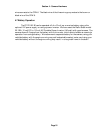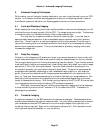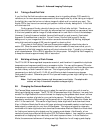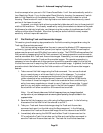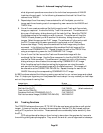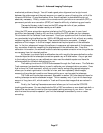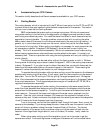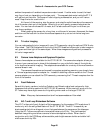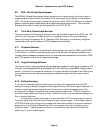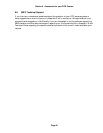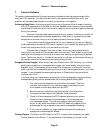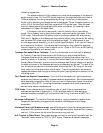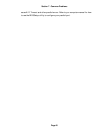Section 6 - Accessories for your CCD Camera
Page 39
6. Accessories for your CCD Camera
This section briefly describes the different accessories available for your CCD camera.
6.1. Cooling Booster
The cooling booster, which is included with the ST-9E and is an option for the ST-7E and ST-8E,
is a small module that gets installed inside the back compartment of the camera. This section
tells you how to best use the Cooling Booster.
SBIG understands that water-cooling is a major annoyance. We do not recommend
using water cooling in the field due to the aggravation of dragging around buckets of water
and finding more electrical power. For users that have fixed sites, or small observatories, the
aggravation is more tolerable. The major problem one must deal with is routing the rather
heavy water tubes off the mount to minimize perturbations to the mount during tracking. In
general, try to route tubes (and wires) over the mount, rather than just let the tubes dangle
from the end of a long tube. Water-cooling is probably not necessary for most users when the
air temperature is below 10 degrees C (50 degrees F), since the dark current is fairly low
already. Think of it as a summertime accessory! We do not recommend use of water cooling
below freezing temperatures, where antifreeze must be added to the water. It is simply not
necessary then. There is no problem with using the cooling booster with only air cooling in the
winter, though.
The cooling booster can be used either without the flowing water or with it. Without
flowing water the cooling improvement is about 6 degrees C. With it the cooling improvement
is about 15 degrees C. If you plan to use it without the water then you should disconnect the
hoses from the camera and shake out the water trapped in the heat sink. Disconnecting the
hoses will reduce the potential perturbation to your telescope mount.
To operate the cooling booster without water cooling, mount the camera to the telescope
as before and simply plug the auxiliary 12 volt supply jack into the connection on the camera
back plate. Turn on the TE cooling to 100% by giving it a target temperature of –50 degrees.
After 10 minutes examine the camera temperature, and reset the set point to 3 degrees C above
the current temperature. This 3 degree temperature margin will enable the ST-7E/8E/9E to
regulate the temperature accurately.
To operate the camera with water cooling, the procedure is the same except that the
water flow must be established before mounting the camera to the telescope, since the water
pumps have limited pressure capability. To do this, put the camera at the same level as the
water reservoir. Connect all the hoses, and make sure the water return goes back into the
reservoir. Push the ¼ inch internal diameter (ID) hoses onto the nipples on the back of the
camera so they seal. Attach one hose to the nipple onto the reducing connector that adapts the
¼ inch ID hose to the ½ inch diameter hose from the pump.
Turn on the pump, and let the flow establish itself through the hoses. Next, mount the
camera to the telescope. If you always keep the return hose outlet near the reservoir level the
pump will have no problem raising the water 2 meters (6 feet) off the floor. The limited
pressure capacity of the pump is only a problem when you let the water fall back into the
reservoir from a significant height above it, such a 0.3 meter (12 inches). Lastly, check for
leaks!
When using water cooling, avoid the temptation to put ice in the water to get the
camera even colder. As the cooling booster is designed, the camera will not be cooled below



